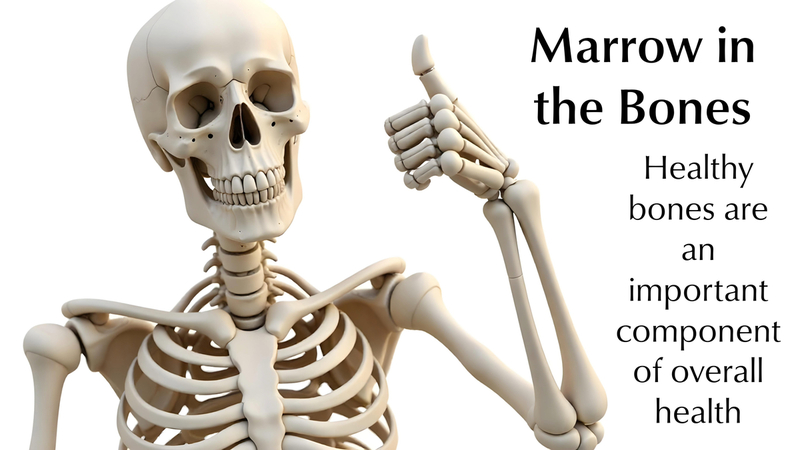
"It shall be health to the navel, and marrow to the bones.” (Proverbs 3:8)
In the religious tradition I grew up with, the phrase “health to the navel, marrow to the bones” was a symbolic representation of what it means to be blessed with good physical health. I have pondered this phrase and think that it contains deep symbolism about what is necessary for us to have good physical health.
Many natural healers stress the importance of the first part of this phrase, “health in the navel.” The navel (or belly button) sits directly over the small intestines and I believe this is symbolic of having a healthy digestive tract. Many of us understand that a major reason why people are sick is because they are constipated, suffer from intestinal inflammation and leaky gut or have other digestive problems. In other words, most people lack “health in the navel.”
Many of us can attest to the benefits of working on the digestive tract as a means of improving overall health based on our own experience. Digestive enzymes, probiotics, increased fiber and a periodic colon cleanse improve overall health and mood. Working on the digestive tract is especially valuable in clearing up depression, respiratory ailments (sinus problems, asthma, etc.), skin problems (acne, eczema, etc.), inflammatory diseases (arthritis, etc.) autoimmune disorders (fibromyalgia, Lupus, etc.) and even general aches and pains such as headaches and backache. So, it is very clear to me that “health in the navel” is a vital key to overall health.
Why Healthy Bones are Essential to a Healthy Body
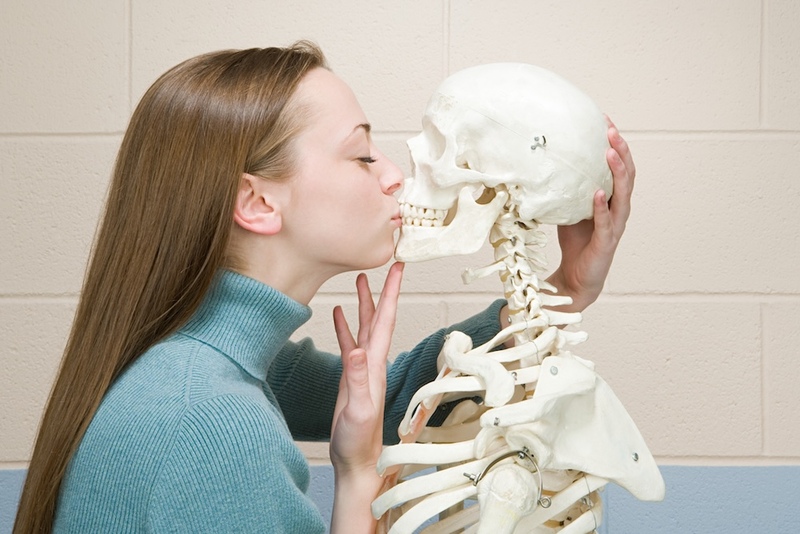 However, even in the natural health field, most people fail to grasp the importance of “marrow in the bones” to overall health. That’s because we tend to think of bones as simply providing support for the body. We also tend to think of bones as static or fixed because we have also seen the rigid nature of dead bones.
However, even in the natural health field, most people fail to grasp the importance of “marrow in the bones” to overall health. That’s because we tend to think of bones as simply providing support for the body. We also tend to think of bones as static or fixed because we have also seen the rigid nature of dead bones.
However, both of these viewpoints are essentially wrong. First of all, bones do a lot more than structurally support the body, as we will discuss in this article. Furthermore, the bones in our body are living tissue and as such are constantly in a state of flux, breaking down and rebuilding themselves. So, with that understanding, let’s examine the importance of bones to our overall health.
The major reason bone health is critical to good health in general is that bones are the body’s mineral storehouse and minerals are the “dust of the earth” from which our body is made. Bones absorb minerals when they are available in the diet and release them as they are needed by other tissues. This is part of the reason why the structure of bones is always in flux.
Calcium Alone Doesn't Make for Healthy Bones
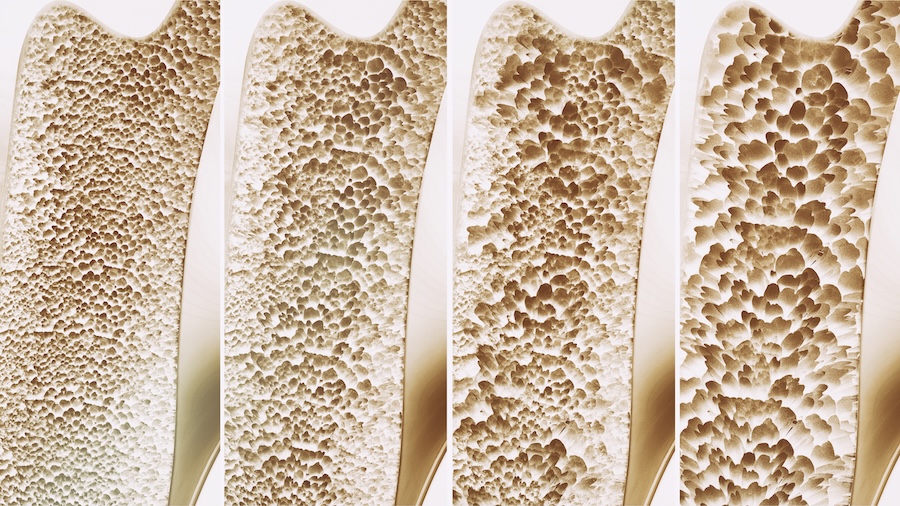 Unfortunately, when people think about minerals and their bones, almost all people think about calcium. For example, I purchase natural cleaning products from a particular company. When I joined and made my initial purchase of cleaning products, they sent me a couple of gifts. One was caramels made with calcium carbonate that were supposed to help you have healthy bones. (The other was protein bars sweetened with Splenda®.) I threw both of these products away.
Unfortunately, when people think about minerals and their bones, almost all people think about calcium. For example, I purchase natural cleaning products from a particular company. When I joined and made my initial purchase of cleaning products, they sent me a couple of gifts. One was caramels made with calcium carbonate that were supposed to help you have healthy bones. (The other was protein bars sweetened with Splenda®.) I threw both of these products away.
I don’t know where people got the idea that all you need for healthy bones is calcium, but it’s a perfect example of the reductionistic thinking that characterizes our modern approach to health. (Calcium is being lost from the bones, so all you need to do is take more calcium.) Well, if you think like this, then I have some news for you—taking calcium, and especially calcium carbonate, isn’t going to give you healthy bones. Calcium carbonate is more likely to give you bone spurs, kidney stones, and increased plaque formation on your teeth than it is to give you healthy bones.
Yes, calcium is the most abundant mineral in bones (and in the rest of the body, too), but bone is a storehouse of numerous other minerals, too. You can’t make bone with calcium alone. You need the right forms of calcium, fats, proteins, and vitamins to assimilate it and many other minerals to produce bone. In fact, it is these other minerals that give bones their strength, flexibility, and durability.
Steel is More Than Iron, and Bone is More Than Calcium

To help you understand why other minerals (besides calcium) are so important to bone health, let’s draw a comparison between the calcium in our bones and the iron in steel. Iron is the major component in steel, but iron alone doesn’t make steel.
So, what’s the difference? It’s in the other elements that are blended with the iron. Cast iron is primarily iron with a high carbon content. Steel has a lower carbon content and is blended with other metals such as manganese, chromium, vanadium and tungsten. By adjusting the quantity of other minerals in the steel, manufacturers can make the steel more or less flexible and control other qualities in the finished metal.
If you think about the structure of chalk, which is calcium carbonate, you will recognize that it soft and brittle. It needs to be combined with other minerals, such as phosphorus, magnesium, copper, zinc, manganese, vanadium, boron and silica, in order to have the flexible strength of healthy bones.
Furthermore, these mineral depositions are held together in a protein matrix which creates the bone structure. This protein structure is composed of a special protein called collagen, which when hydrolyzed (broken down in water) becomes gelatin. This same protein forms the basis of cartilage, which protects our joints.
Once we understand these facts, it’s very easy to explain why people have so many problems with their bones in Western culture. It’s not from a lack of calcium, per se, but more from a general lack of good nutrition, especially trace minerals.
The Health of Teeth and Bones Reflects Overall Nutritional Reserves
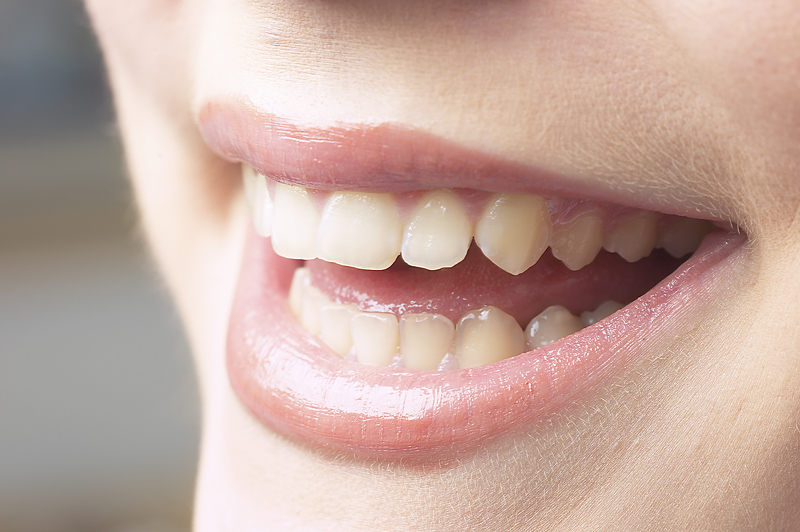 This conclusion is supported by the work of Dr. Weston Price, author of Nutrition and Physical Degeneration. In the 1930s, Dr. Price, a dentist, traveled the globe studying the diet, dental health, and general health of people living on traditional diets versus people living on modern diets in the same part of the world. Everywhere he went, Dr. Price found the same pattern. Native people living on traditional diets had practically perfect bones and teeth and wonderful physical health to go with it.
This conclusion is supported by the work of Dr. Weston Price, author of Nutrition and Physical Degeneration. In the 1930s, Dr. Price, a dentist, traveled the globe studying the diet, dental health, and general health of people living on traditional diets versus people living on modern diets in the same part of the world. Everywhere he went, Dr. Price found the same pattern. Native people living on traditional diets had practically perfect bones and teeth and wonderful physical health to go with it.
A second conclusion of Dr. Price was that tooth decay was one of the primary signs of malnutrition. Teeth and bones are both composed primarily of minerals, so a lack of health in the teeth suggests mineral deficiency in the bones, too. Thus, our problems with tooth decay are intimately linked with the widespread incidence of arthritis and osteoporosis in our culture. Dr. Price’s research suggests that these structural problems are essentially evidence of malnutrition.
The conclusion Dr. Price came to in his research was that traditional foods and traditional diets were more nutritionally dense. That is, there were more nutrients (minerals, vitamins, etc.) present in the food traditional people consumed than are found in the same quantity of food in modern diets.
Modern research supports Dr. Price’s conclusion. I have seen other research that suggests that the mineral content of commercially grown fruits and vegetables may be as much as 90% lower than fruits and vegetables organically grown in traditional, compost-rich soil. Since bone is the mineral storehouse of the body, if we are eating a diet that contains less than 10% of the trace minerals it should, it is no wonder our mineral storehouses become increasingly empty as we age.
Let me add a special note here about pregnant women. Many women develop problems with teeth, hair, bones, and skin during pregnancy or after repeated pregnancies. The reason for this is simple—the developing baby gets first dibs on the minerals, and mom’s mineral reserves become depleted. This explains why my midwife friend Joan Patton found that giving women a formula of mineral-rich herbs during pregnancy (see next page) eliminated 90% of complications in pregnancy.
Calcium is Necessary, But....
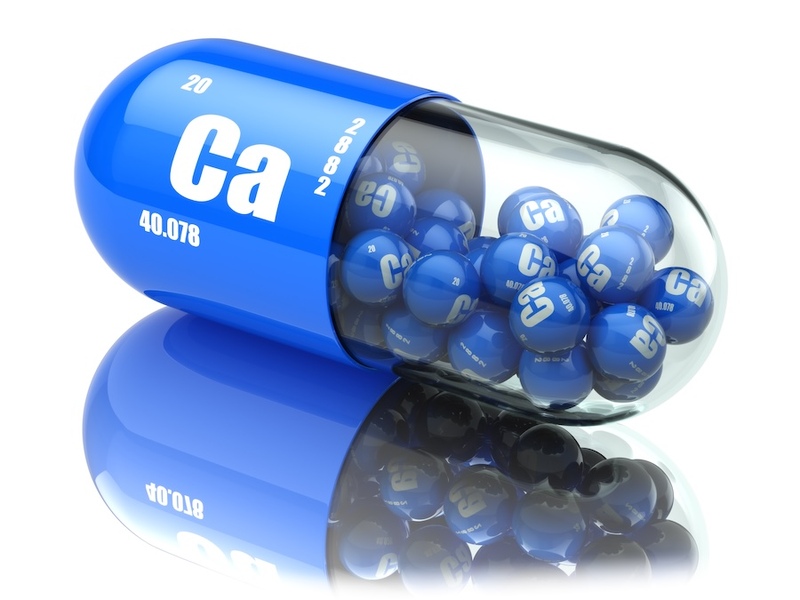 The problem with calcium carbonate is that it neutralizes hydrochloric acid production. Hydrochloric acid is absolutely essential to absorbing calcium, magnesium, iron and numerous other minerals. The calcium in calcium carbonate is absorbed as free calcium. Calcium must be properly bound in the gut to be utilized by bones and tissues. Unbound or free calcium is generally flushed out of the body through the kidneys and increases the risk of kidney stones. A high level of unbound calcium in the blood is also a risk factor for cancer.
The problem with calcium carbonate is that it neutralizes hydrochloric acid production. Hydrochloric acid is absolutely essential to absorbing calcium, magnesium, iron and numerous other minerals. The calcium in calcium carbonate is absorbed as free calcium. Calcium must be properly bound in the gut to be utilized by bones and tissues. Unbound or free calcium is generally flushed out of the body through the kidneys and increases the risk of kidney stones. A high level of unbound calcium in the blood is also a risk factor for cancer.
If one is going to use calcium supplements, I think one should at least consider forms of calcium like amino acid chelates, calcium citrate, or other forms that assimilate better. However, the best way to get calcium is from the diet.
Getting the Minerals Your Bones Need

This brings me to the dairy issue. Dairy products are rich sources of calcium, so why do the countries that consume the most dairy foods also have higher incidences of osteoporosis-related fractures? Asian cultures, which use a minimal amount of dairy, have some of the lowest incidences of osteoporosis in the world. By the way, Asians don’t use calcium supplements or fortify food with calcium, so why isn’t osteoporosis rampant in China and Japan?
The answer is obvious if you just think about it. How do cows get so much calcium in their milk? Where does all that calcium come from? It comes from the cow’s diet, of course. And what do cows eat? They eat green foods like alfalfa, various grasses, and other green leafy plants. What do Asians eat more of than we do? Green leafy vegetables. The best foods for getting calcium to build strong, healthy bones are Swiss chard, beet greens, turnip greens, collards and even broccoli.
It’s not that dairy foods are bad, per se. Weston Price found tribes in Africa that lived primarily on milk and blood from their cattle. These tribesmen were completely free of cavities and immune to all diseases like malaria and yellow fever. Their animals weren’t being fed hormones, antibiotics, and commercial feed; they were grazing on green plants. Also, the milk these animals produced wasn’t pasteurized, homogenized, skimmed, and “fortified.
So, yes, if you can get fresh raw milk from “grass-fed” cows that have been grazing on good pasture, it would be great for your bones. However, I would suggest that it wouldn’t just be because of calcium in the milk. Such milk would contain the other trace minerals and nutrients needed for strong bones and good general health.
Restocking the Storehouse
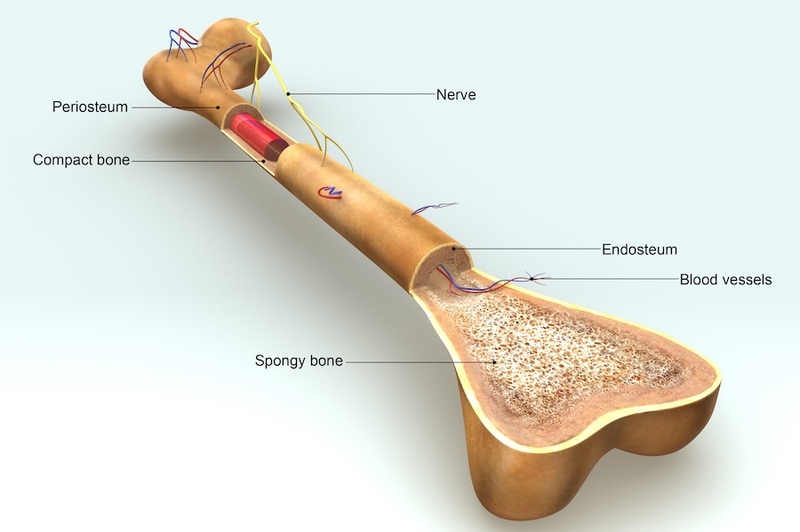 So, let’s get back to that phrase, “marrow in the bones.” By now, it should be very clear that we need an abundant supply of minerals in the diet to be healthy. The health of the bones and teeth is an indicator of whether we are being adequately nourished, and particularly if we are getting enough minerals. If you (like me) have had cavities, impacted wisdom teeth, and problems with gum disease, then it’s fairly safe to say that your nutrition (like mine) has been compromised.
So, let’s get back to that phrase, “marrow in the bones.” By now, it should be very clear that we need an abundant supply of minerals in the diet to be healthy. The health of the bones and teeth is an indicator of whether we are being adequately nourished, and particularly if we are getting enough minerals. If you (like me) have had cavities, impacted wisdom teeth, and problems with gum disease, then it’s fairly safe to say that your nutrition (like mine) has been compromised.
Fortunately, bones aren’t static, so if we start improving our nutrition today, our bones will gradually become stronger. So, how can we accomplish this?
Well, for starters, we should consume more nutritionally dense foods. Purchase quality fruits and vegetables (which may mean buying organic, but may also mean locally-grown). Better yet, have a small garden, use all your kitchen scraps to make compost, and grow some of your own nutritionally-dense produce. Besides minerals, it takes vitamins to build healthy bones. Vitamin D3, for instance, is essential for getting calcium into the bones, and most people are deficient in it. B-Complex vitamins and Vitamin C are also utilized in bone creation. Protein is also needed for bone formation, so low-protein diets may cause problems with bone.
Mineral Water
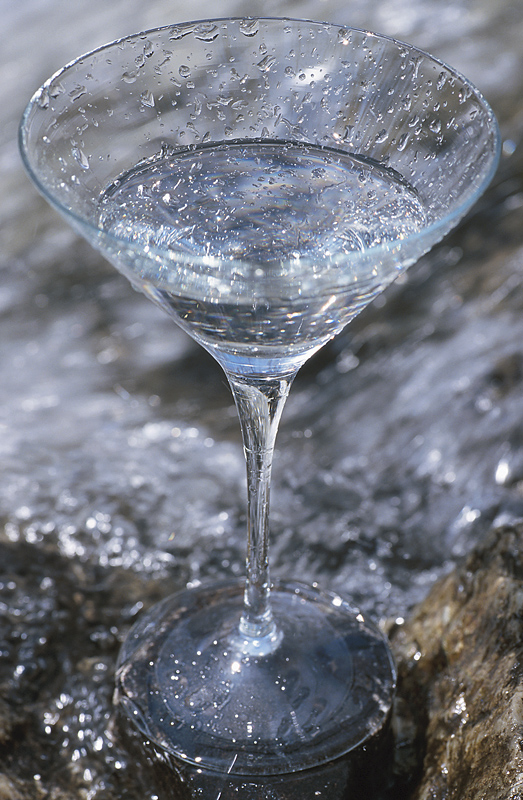 Another good source of minerals is mineral-rich water. People around the world have sought out mineral springs for healing. Mineral water (that is, water with a high content of minerals) has a healing effect on the body because it provides the “dust of the earth” our bones and our bodies need in a form that can be assimilated. A high-quality colloidal mineral supplement is essentially artificially made mineral water. I find it interesting that Sally Fallon, in her book Nourishing Traditions, criticizes the use of colloidal mineral supplements and then basically recommends making your own by putting a good quality clay in water, stirring it up and then letting the clay settle and drinking the water off the top. That’s basically how colloidal minerals are made.
Another good source of minerals is mineral-rich water. People around the world have sought out mineral springs for healing. Mineral water (that is, water with a high content of minerals) has a healing effect on the body because it provides the “dust of the earth” our bones and our bodies need in a form that can be assimilated. A high-quality colloidal mineral supplement is essentially artificially made mineral water. I find it interesting that Sally Fallon, in her book Nourishing Traditions, criticizes the use of colloidal mineral supplements and then basically recommends making your own by putting a good quality clay in water, stirring it up and then letting the clay settle and drinking the water off the top. That’s basically how colloidal minerals are made.
One starts with a high-quality clay from an ancient seabed that is loaded with minerals. When water leeches slowly across these deposits and comes out in a spring, you have a mineral spring. To make colloidal minerals, you simply mine the deposit and percolate water through the clay until you get a concentrated mineral water.
Studies show that people who drink mineral-rich water have healthier bones and teeth. Both Weston Price and Dr. Bernard Jensen found that cultures that drank mineral-rich water (such as glacial runoff) had better bones and healthier bodies.
Unfortunately, much of today’s water is also contaminated with chemicals, so some kind of treatment or filtration is desirable to remove the contaminants. Unfortunately, this also removes many of the minerals. This can easily be overcome by drinking a colloidal mineral product. I also use colloidal minerals in my garden for healthier plants.
Herbs for the Bones
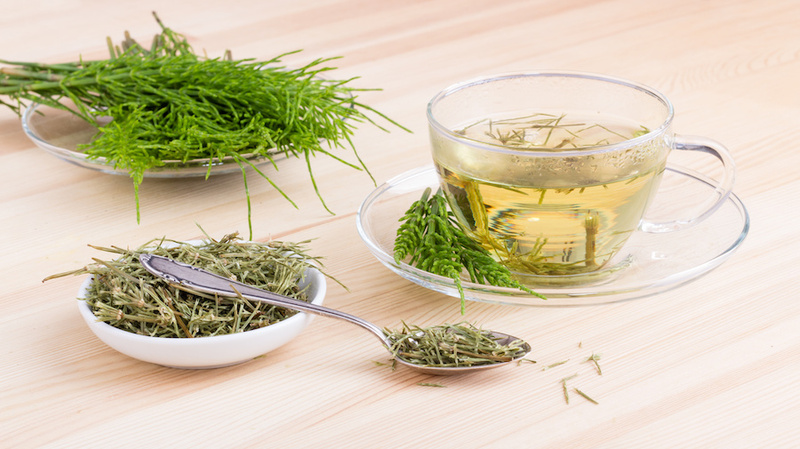 Herbal supplements are another great way to get trace minerals into the diet. Over the years, I have found mineral-rich herbs to be more effective at restoring tissue levels of minerals than any other approach I have taken. Watkin's Hair, Skin, and Nails Formula is one of my favorite remedies here. It contains horsetail, dulse or kelp, rosemary, and sage. People tend to oversimplify this remedy by thinking of it as a silica supplement, but it’s much more than that. It contains herbs rich in calcium and other trace minerals, and is very good for joints, bones, connective tissue, and the nervous system.
Herbal supplements are another great way to get trace minerals into the diet. Over the years, I have found mineral-rich herbs to be more effective at restoring tissue levels of minerals than any other approach I have taken. Watkin's Hair, Skin, and Nails Formula is one of my favorite remedies here. It contains horsetail, dulse or kelp, rosemary, and sage. People tend to oversimplify this remedy by thinking of it as a silica supplement, but it’s much more than that. It contains herbs rich in calcium and other trace minerals, and is very good for joints, bones, connective tissue, and the nervous system.
Watkin's Hair, Skin, and Nails Formula was one of the primary remedies I put my mother on for her arthritis. I also gave her an Herbal Arthritis Formula. I didn’t give her a calcium supplement, just these herbal remedies. At age 82, she slipped on the stairs and fell, chipping a bone in her knee, which required surgery. The doctor said she had the bones of a 50-year-old. I assure you that this wasn’t from taking calcium supplements. It was from taking herbs.
My favorite formula for trace minerals is a blend created by my midwife friend Joan Patton. She called it Herbal Calcium; I called it Herbal Minerals. It contains alfalfa, nettles, oatstraw, horsetail, and red raspberry. I’ve seen these herbs help build healthier teeth, joints, bones, and connective tissue as well as improve people’s overall health and immune system function. You can easily blend these herbs and brew them into a tea, or you can learn how to make them into a glycerite in The Modern Herbal Dispensatory.
So, what have we learned so far? Well, we’ve discussed that minerals are vital to health and that the bones are the mineral storehouse of the body. If mineral levels are low, then bones, joints, and teeth will have problems, which will also relate to overall health problems due to a lack of minerals. We have also seen that nutritionally dense foods, mineral water (including colloidal minerals), and mineral-rich herbs are the keys to rebuilding adequate mineral reserves.
Getting Marrow in Your Bones
 But we’re still missing one important factor as to why bone health is so vital to overall health. It’s marrow, which takes us back to the beginning of this article. Marrow is the soft, spongy tissue in the center of our bones. Bones are semi-hollow because a hollow structure is stronger than a solid structure of the same mass. However, the body doesn’t ignore this space, it makes good use of it because marrow is the source of red and white blood cells. In other words, marrow helps build the blood. If one doesn’t have healthy marrow, they can’t have good health because they will be anemic and lack immune function.
But we’re still missing one important factor as to why bone health is so vital to overall health. It’s marrow, which takes us back to the beginning of this article. Marrow is the soft, spongy tissue in the center of our bones. Bones are semi-hollow because a hollow structure is stronger than a solid structure of the same mass. However, the body doesn’t ignore this space, it makes good use of it because marrow is the source of red and white blood cells. In other words, marrow helps build the blood. If one doesn’t have healthy marrow, they can’t have good health because they will be anemic and lack immune function.
So, here’s another important way in which “marrow in the bones” is a symbol of good health. Recall that Dr. Price observed that people with strong bones and teeth were also resistant to infectious diseases.
Marrow is good food. Part of the reason dogs chew on bones is to crush them to get the marrow. We can get the benefits of marrow into the diet (and all the other nutrients needed for healthy bones and joints) by making broth. One of the most valuable pieces of information I acquired from Sally Fallon’s Nourishing Traditions books was the information about making broth. It’s something few people do anymore, but after reading about the benefits of broth, I began making it myself.
Perhaps you’ve heard of using chicken soup for colds? Well, the chicken soup that works is one made with real chicken broth, which is made by simmering the whole chicken, bones and all, which extracts all that goodness from the bones, marrow, and joints. This nutrient-rich liquid is not only good for your immune system, it’s good for your bones, teeth, hair, skin, nails, muscles, nerves, digestion, and liver, too.
Broth isn’t hard to make. Put your bones and meat scraps in a large pot of cold water with some vegetables like onions, celery, and carrots, cut into large pieces. Add 1/4 to 1/2 cup of vinegar and let it soak for about one hour. Then bring the whole mixture to a boil. Reduce the heat to a simmer and simmer the mixture for 8-12 hours. Strain off the broth, pick out the meat, and throw everything else away. There's also an article on this website about making bone broth. For additional healp, get a copy of Nourishing Traditions or go to the Weston Price organization website.
I hope you have a new appreciation for the importance of healthy bones to a healthy life and a better understanding of what you need to do to keep your bones strong. May you have health in your navel and marrow in your bones, so you can live a long, healthy, and happy life.
Downloads
Steven's Articles
-

-
The Health Benefits and Problems with Coffee
This popular caffeinated beverage can be beneficial…
October
-

-
Understanding Caffeine & Cellular Adaptation
Preserving the power of caffeine's buzz and the…
September
-

-
Horseradish
A pungent spice for aiding protein metabolism…
-

-
Banaba or Crepe Myrtle
A beautiful tree from Southeast Asia whose leaves…
August
-

-
Monkeyflowers
Flower essences to help see ourselves more clearly…
-

-
Mariposa Lilies
Strengthening the bond between mother and child…
-

-
The Noble Bay Leaf
A common kitchen herb for aiding digestion and…
-

-
Epimedium: Horny Goat Weed
A circulatory stimulant and kidney yang tonic…
July
-

-
The Medicinal and Nutritional Benefits of Apricots
A nutritious fruit and valuable medicinal seed for coughs
-

-
Dogwoods
Asian dogwood is used to stop excessive discharge,…
June
-

-
Neem: The Village Pharmacy
A popular Ayurvedic remedy for dental and immune…
-

-
Spilanthes: The Toothache Plant
A traditional remedy for teeth and gums, as well…
-

-
Forsythia
An anti-inflammatory, fever-reducing, and infection fighting herb
May
-

-
Buckwheat (Kashi)
A delicious, high protein, gluten-free, gut-healthy food
-

-
Leaky Gut Syndrome
Plugging the leaks on the underlying cause of…

